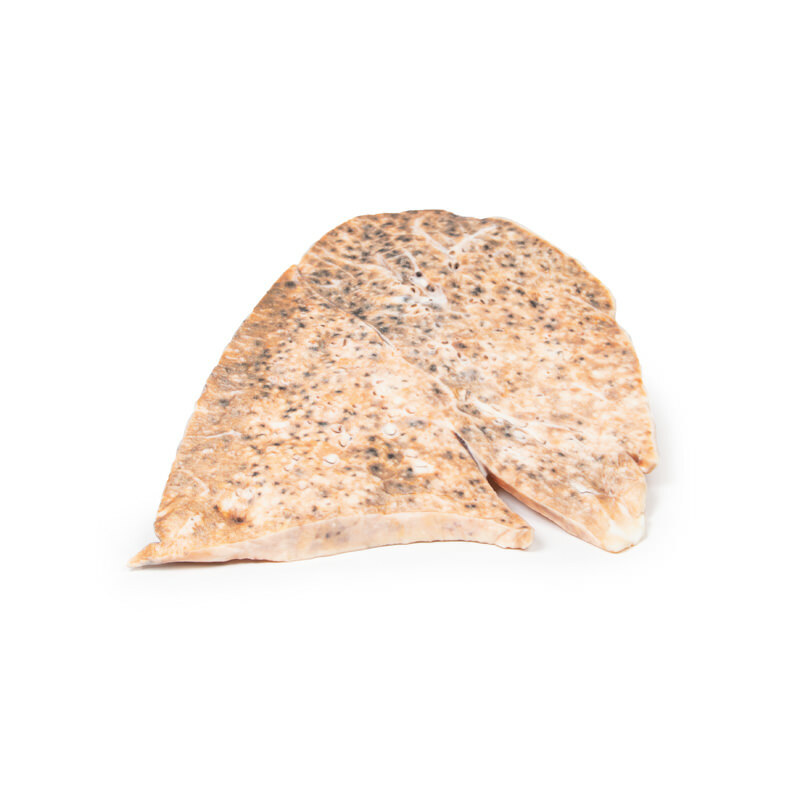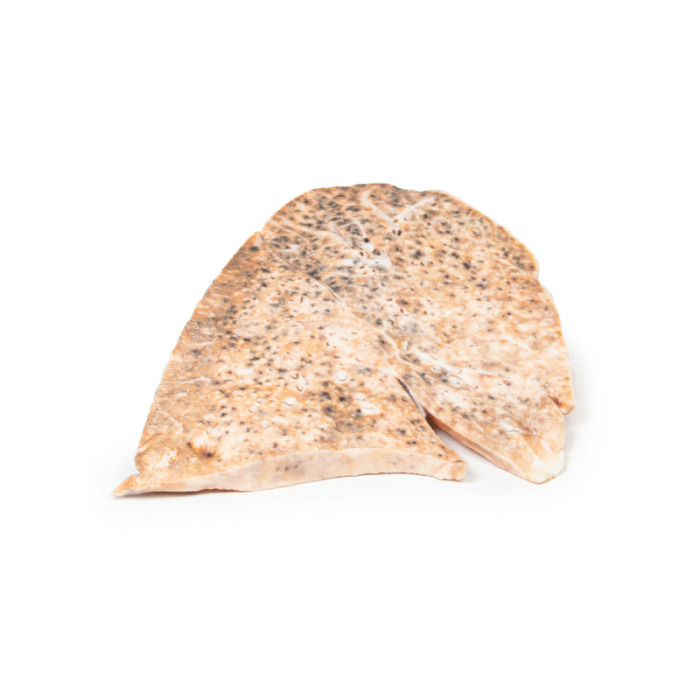MP2060 - Right lung miliary tuberculosis
By buying you get
186 Points
More than a purchase. You get service and expert advice. Ask which products and combinations are recommended for you.
Clinical History
A 74-year old male presented with increasing shortness of breath and haemoptysis. Further history reveals 20kg weight loss in 6 months, night sweats and a chronic cough. He has recently moved from a country where TB is endemic. On examination, he has hypoxic and tachypnoea and has bilateral crepitations throughout his lung fields and a dull left lung base on percussion. His quantiferon gold blood test is positive. His chest x-ray showed bilateral small nodular deposits and a left basal pneumonia. He died from respiratory failure soon after admission.
Pathology
The right lung has been sliced longitudinally and mounted to display the cut surface. The bronchi and bronchioles are mildly ectatic. Scattered throughout the entire lung parenchyma are large numbers of small, pale yellows nodules less than 1 mm in diameter. Similar tiny subpleural nodules are seen on the surface of the visceral pleura. The nodules are tubercles. This is miliary tuberculosis, so-called due to the resemblance of the nodules to millet seeds.
Further Information
Tuberculosis (TB) is a chronic pulmonary and systemic infectious disease caused by Mycobacterium tuberculosis. Transmission most commonly occurs via inhalation of aerosolized droplets of this pathogenic bacteria, first described by Robert Koch (1882). Risk factors for contracting TB include being an inhabitant of a developing country where the disease is endemic, immunosuppression (e.g. HIV, steroid use, anti-TNF use and diabetes), chronic lung disease (e.g. silicosis), alcoholism and malnutrition. After initial pulmonary infection of M. tuberculosis clinical manifestation varies. In 90% of individuals with an intact immune system they enter an asymptomatic latent infection phase. This latent TB may reactivate at any time in the patient‘s life. In the other 10% of patients, especially in the immunocompromised, they develop primary disease which is immediate active TB infection. Manifestations of primary TB include pulmonary infection symptoms (e.g. consolidation, effusion and hilar adenopathy) and extra pulmonary symptoms including lymphadenopathy, meningitis and disseminated miliary TB. Secondary tuberculosis occurs when there is reactivation of previous latent TB infection. Around 10% of latent TB will reactivate usually during periods of weakened host immunity. Typical symptoms of reactivation are cough, haemoptysis, low grade fever, night sweats and weight loss. Miliary TB occurs when the mycobacterium erodes into a pulmonary vein and seeds elsewhere. The organism can circulate back to the lung and disseminate thought the lung parenchyma as in this case. Systemic miliary tuberculosis can occur when the mycobacterium is disseminated through the arterial system. The TB can then deposit in any organ but most commonly in the liver, bone marrow, spleen and adrenal glands.
The immune response against TB is mediated via TH1 cells stimulate alveolar macrophages to attack the mycobacteria. These macrophages surround the infection forming a granuloma surrounding a central area of ‘caseous’ (white cheese-like) necrosis. Secondary pulmonary TB may heal with fibrosis or progress as in this case. Progressive pulmonary TB sees erosion and expansion of the infectious lesion into adjacent lung parenchyma. This leads to evacuation of the caseous centre leading to fibrous cavitation. Erosion of blood vessels can occur causing haemoptysis. Post treatment of TB the tissue heals by fibrosis but does not recover the pulmonary architecture.
TB diagnosis is usually made with a clinical history and chest x-ray and multiple sputum cultures. Mantoux skin tuberculin test and serum interferon gamma release assay may also be used to help screen for infection. Biopsies may be taken of suspected infection site for culture to assist diagnosis. Treatment involves prolonged courses of multiple antibiotics, which depend on the antibiotic resistance of the infecting mycobacterium.
- Quantitative unit
- ks

MP2060 - Right lung miliary tuberculosis








